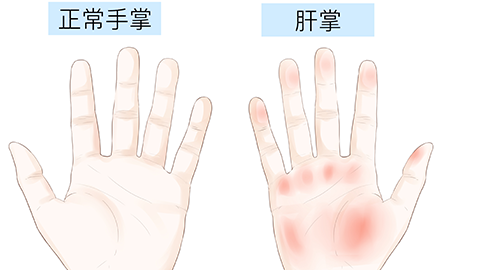What is the treatment for palmar erythema?
Generally, it may be caused by genetic factors, emotional factors, fatty liver, cholestatic hepatitis, cirrhosis, and other reasons. Treatment options include general management and medication, under a doctor's guidance. If discomfort occurs, prompt medical attention is recommended. Detailed analysis is as follows:

1. Genetic Factors
The occurrence of palmar erythema (liver palms) may be related to genetic factors. Some people are born with naturally red palms, which is not a sign of disease. Usually, no special treatment is required, but attention should be paid to changes in palm color. Seek medical attention promptly if abnormalities occur.
2. Emotional Factors
Long-term mental stress, anxiety, depression, and other emotional factors may affect the endocrine system, causing changes in estrogen levels, which can lead to liver palms. In such cases, improving emotional well-being and psychological adjustment may help alleviate symptoms of palmar erythema.
3. Fatty Liver
Fatty liver mainly results from obesity, long-term heavy alcohol consumption, diabetes, and other factors that cause excessive fat accumulation in the liver. Liver function becomes impaired, reducing its ability to metabolize estrogen, leading to estrogen accumulation in the body and resulting in liver palms. It is often accompanied by symptoms such as fatigue, mild pain in the upper right abdomen, and reduced appetite. Under a doctor's guidance, medications such as polyene phosphatidylcholine capsules, silymarin capsules, and compound glycyrrhizin tablets may be used for treatment. At the same time, dietary control, reduced fat intake, increased physical activity, and weight management are recommended.
4. Cholestatic Hepatitis
Cholestatic hepatitis is often caused by intrahepatic or extrahepatic bile duct obstruction and impaired bile excretion. Bile stasis causes liver cell damage and affects normal metabolic functions of the liver, including estrogen metabolism. Symptoms such as jaundice and skin itching may also appear. It is recommended to use medications such as ursodeoxycholic acid capsules, ademetionine enteric-coated tablets, and colestyramine powder under medical guidance to improve bile stasis.
5. Cirrhosis
Long-term liver disease, drug-induced liver injury, and other factors can lead to cirrhosis. Alterations in liver tissue structure severely impair liver function, significantly reducing the liver's ability to inactivate estrogen, which can trigger liver palms. Commonly associated symptoms include ascites, esophageal and gastric varices, and splenomegaly. Medications such as spironolactone tablets, furosemide tablets, and propranolol tablets may be used under medical supervision for treatment.
In daily life, avoid long-term heavy alcohol consumption to reduce alcohol-induced liver damage.






